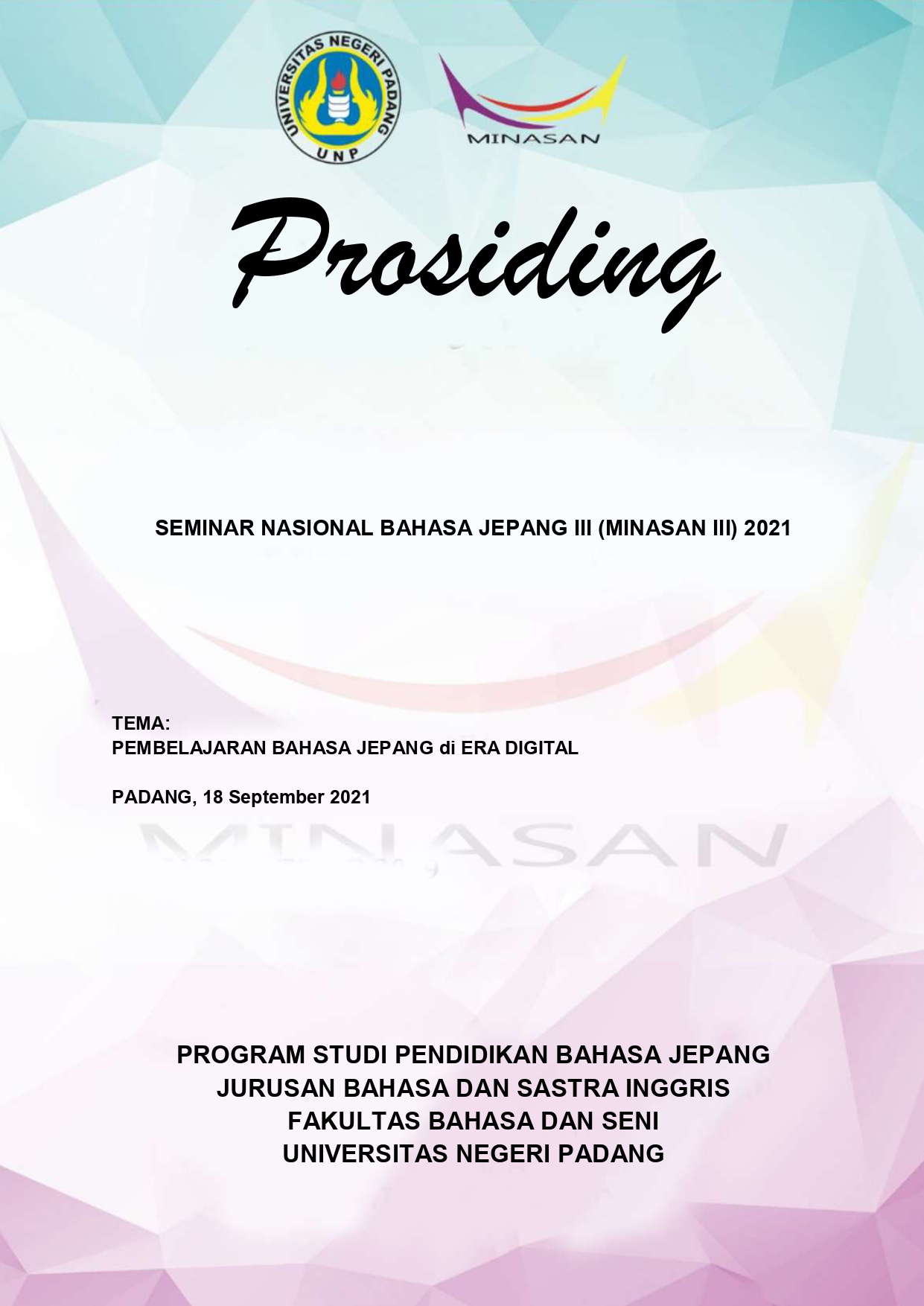INTERFERENSI BAHASA IBU TERHADAP PEMEROLEHAN BAHASA KEDUA
Kata Kunci:
mother tongue, second language, interference, language acquisition, communicationAbstrak
Mother tongue has a great influence on second language acquisition. This is a natural thing in the
process of learning a foreign language. However, it will cause problems in communicating if left unchecked.
Therefore, in learning a foreign language, it is necessary to balance cultural knowledge and language
knowledge. Errors in communication often occur due to differences in the perception of the meaning of
communicating, differences in point of view, lack of cultural information, the culture of the speaker, language
politeness factors, and others.The purpose of the study is to find out what types of interference occur and the
causes of the occurrence from the linguistic and cultural aspects. This study uses the interference theory of
Chaer (1995) using a qualitative descriptive method that discusses and analyzes mother tongue interference
on second language acquisition in Japanese Literature students at Pasim National University. The results of
the study show that three factors caused the mother tongue relation to language acquisition, namely (1)
language learning environment, (2) gaps in linguistic aspects, and (3) psychological factors. The types of
errors that often occur, namely (1) students use the translation process through their mother tongue, (2)
students do not understand cultural aspects, (3) students cannot yet express communication messages
spontaneously in a second language, and the way to overcome this problem is that the teacher must play an
active role in providing insight into the different cultures, mindsets and habits of the Japanese language.
Referensi
Chaer, A. (1995). Sosiolinguistik Perkenalan Awal. Jakarta: Rineka Cipta.
Dayanti, E. (2020). Pembelajaran Bahasa Kedua. Majalah Online Pendidikan & BUdaya. Jendela Kita, 2.
https://jendelakita.id/ragam/pembelajaran-bahasa-kedua/
Dickerson. (1975). The Fundamental of Legal Draffing. Boston, Toronto: Litle Brwon and Co.
Djajasudarma, F. (1993). Metode Linguistik : Ancangan Metode Penelitian dan Kajian. Bandung: Ersco.
Djajasudarma, F. (1999). Konstruksi Imperatif Bahasa Sungadan Padanannya dalam Bahasa Indonesia.
Bandung: Proyek Pembinaaan Bahasa dan Sastra IndonesiaDaerah propinsi Jawa Barat.
Ellis, R. (1994). The Studi of Second Language Acquisition. New York: Oxford University Press.
Fukushima, E. (1991). Meirei- Irai noHatsuwa niOkeru Taigu Hyougen. Japan: Fukuoka YWCA Nihongo
Kyooiku Inkai.
Kawaguchi, Y. (1999). Irai Hyougen Houraku no Bunseki to Kijutsu: Taigu Hyougen Kyouiku no Oyooni
Mukau. Japan : Waseda Daigaku Nihongo Krnyuu Kyouiku Sentaa.
Krashen. (1981). Second Language Acquisition and Second Language Learning.
Ningsih, E. (2013). Negative Intreference dala Aspek Linguistik yang Berpengaruh Terhadap Timbulnya
Kesalahn pada Sakubun Mahasiswa Semester V di Universitas Dharma Persada Jakarta. Jurnal Sastra
Universitas Nasional Pasim.
Rahmat, N. (2000). -Te Itadakimasu, -sasete Itadakimasu, Itasu: Sebuah Aplikasi Hasil Studi Nihongogaku
terhadap Nihongokyouiku. Wa. GAKKAI Jawa Barat.
Shafa. (2020). Teori Pemerolehan Bahasa dan Implikasinya terhadap Pembelajaran. STAIN Samarinda,
https://id.search.yahoo.com/search?fr=mcafee&type=E210ID714G0&
Unduhan
Diterbitkan
Terbitan
Bagian
Lisensi
Hak Cipta (c) 2022 Dewi Saparina Halibanon

Artikel ini berlisensi Creative Commons Attribution 4.0 International License.







